I will be frank with you, I tell you it can feel like a minefield when you are trying to pick out bathroom flooring when blindfolding. A single misstep and you are left with warped wood, cracked tiles or worst still that damp stench that stems from bad college books that nobody wants to speak about. However, it is like this: I have been to this rodeo more than I can count, and I have come here to spare you the same headaches that I have had.
Having remodeled three bathrooms (and done everything wrong in the book) I have discovered what really works and what is a marketing gimmick. And therefore, get a coffee and we will discuss how to choose the flooring that will not make you think, five years into the future, how you will be cursing yourself.
Understanding Your Bathroom’s Unique Challenges
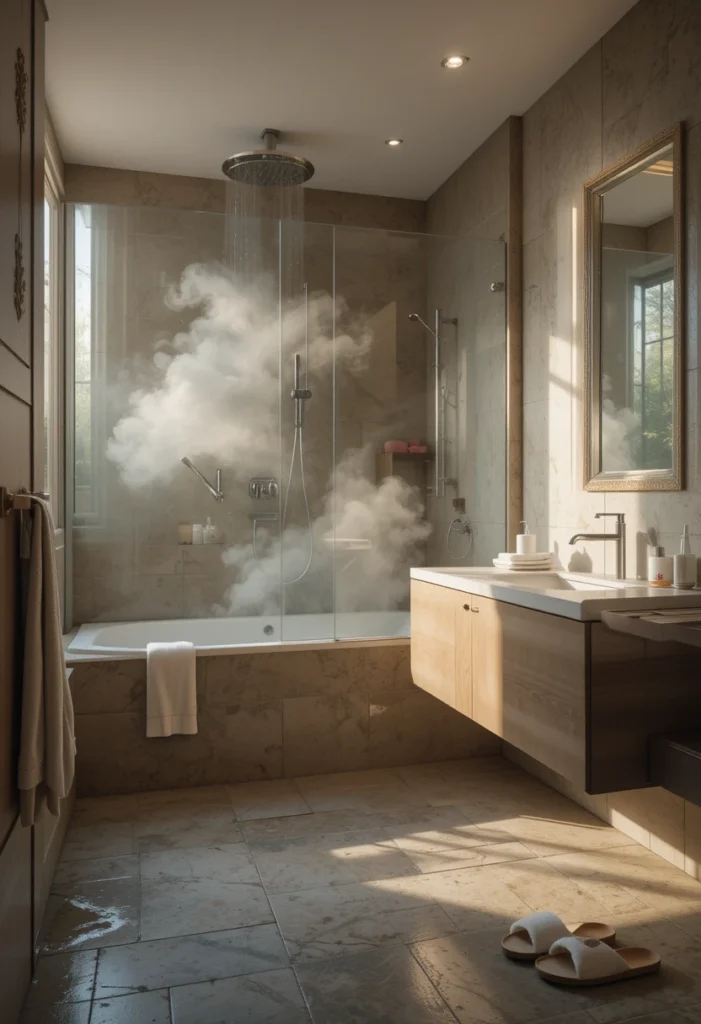
Your bathroom is not the ordinary room and it is actually a torture chamber to flooring materials with moisture. Imagination: steam showers, a splash of water, the dampness, which a rainforest won’t even consider jealous of, and the changes in temperature that make you feel like you are in the sauna one moment and the Arctic the next.
This was something I had to learn the hard way when I first learned the process of installing beautiful hardwood in my first remodelling of the bathroom. Spoiler alert: it did not have a happily-ever-after. The timber was twisted to the extent, that I could almost move it with as a skateboard ramp.
Key factors your bathroom flooring must handle:
- Constant moisture exposure
- Temperature fluctuations
- Heavy foot traffic (especially in family bathrooms)
- Potential flooding from overflows
- Chemical exposure from cleaning products
Have you ever wondered why certain materials work out well in bathrooms and yet others do not work at all? It is all question of their response to these environmental stressors.
The Heavy Hitters: Top Bathroom Flooring Options
Porcelain and Ceramic Tiles
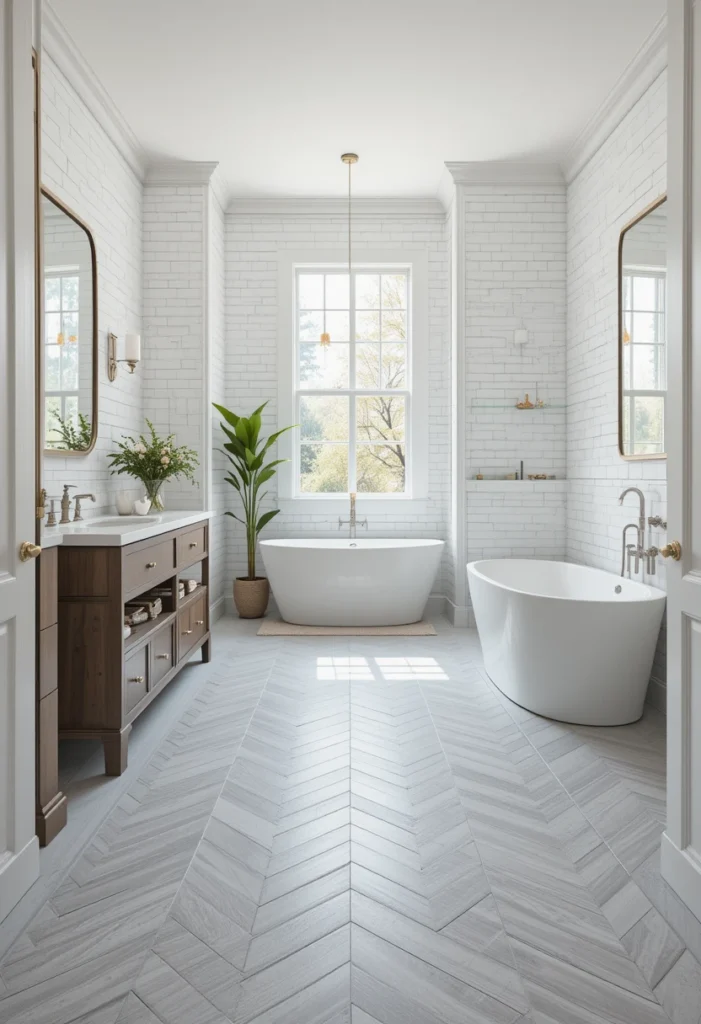
We shall begin with old time champions. Porcelain tiles are the supermen of the bathroom flooring. They laugh at water, shrug at the changes in temperature and continue to look good year after year.
I have had porcelain in my master bathroom eight years on and it still appears sharp as the time I installed it. The secret? Porcelain is heavier in comparison to ceramic and is therefore practically waterproof.
Porcelain pros:
- Completely waterproof
- Endless design options (wood-look, stone-look, patterns)
- Easy to clean and maintain
- Slip-resistant options available
- Long-term durability
The downsides:
- Can feel cold underfoot (though radiant heating fixes this)
- Installation requires precision
- Higher upfront cost than some alternatives
Ceramic tiles are also effective although they are a bit porous. In high-moisture rooms, I would always use porcelain. It is worth the additional cost, I promise.
Luxury Vinyl Plank (LVP) and Vinyl Flooring
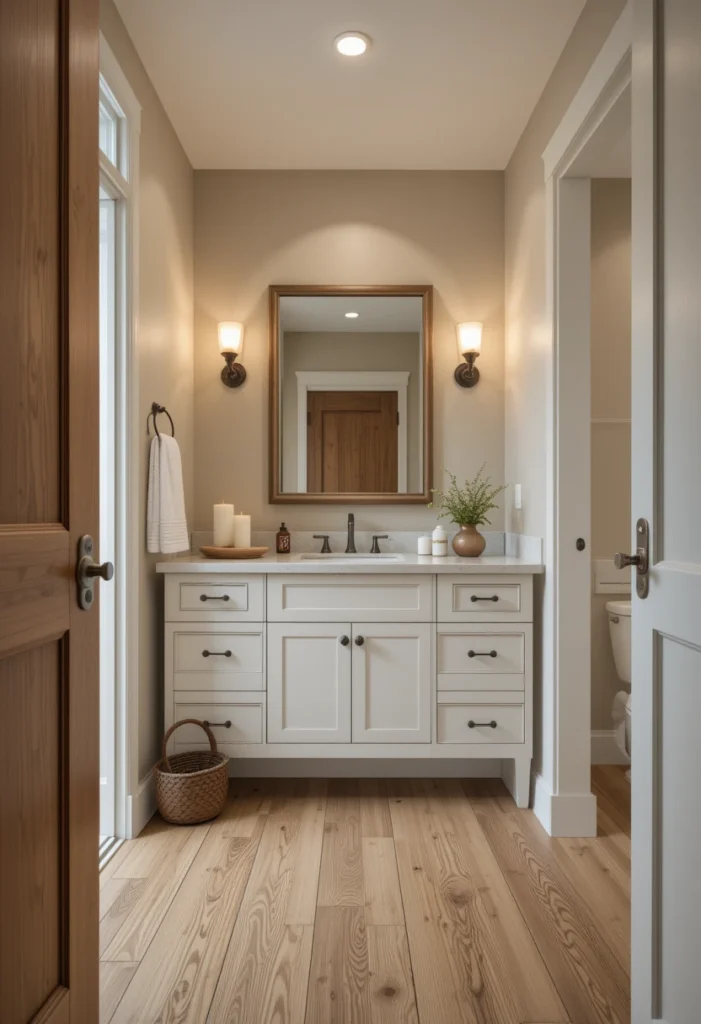
Alright, before you start scruncing up your eyebrows and use the excuse of a tired yet cheap vinyl record of the seventies, listen to me. Contemporary luxury planking in vinyl is a totally different entity. I was not convinced until I fitted it in a guest bathroom and I am a convert now.
The LVP of today is extremely realistic- there were certain planks that were made of wood and I had to do a second take. What is more, it is completely water-proof (when installed correctly) and is warmer to walk on than tile.
LVP advantages:
- Completely waterproof core
- Softer and warmer than tile
- Easy DIY installation
- Budget-friendly
- Realistic wood and stone appearances
Consider these drawbacks:
- Can show scratches from sharp objects
- May fade with excessive UV exposure
- Quality varies significantly between brands
By the way, not all vinyl is created equally. It is best to spend on good brands that have thick wear layers because your future will appreciate you so much.
Natural Stone Options
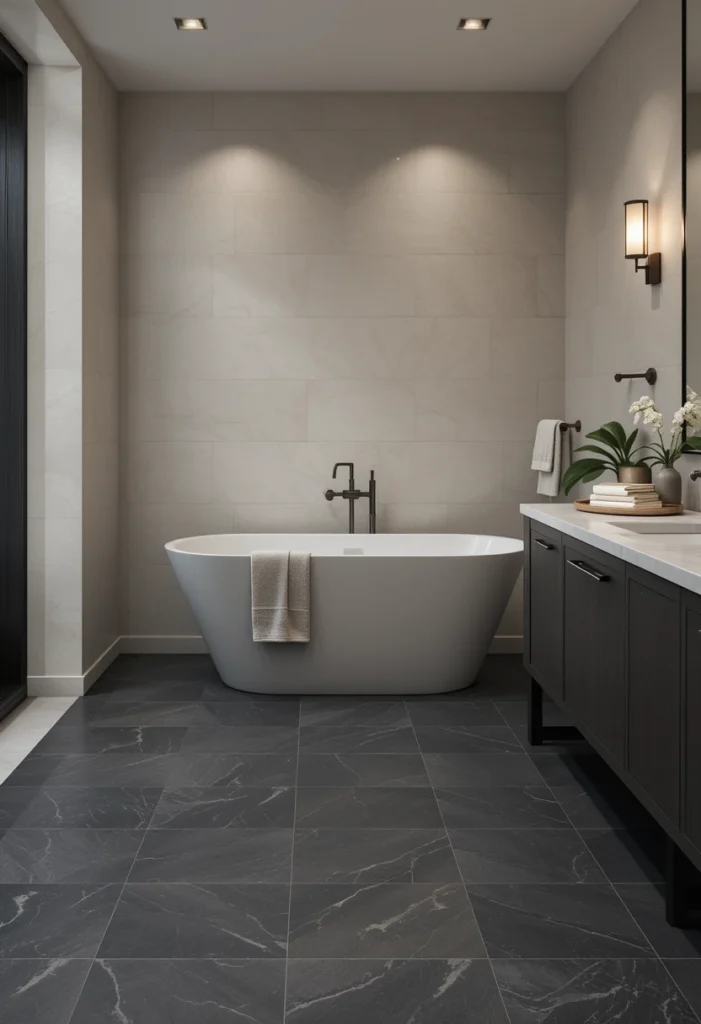
Bathrooms with natural stone have unquestionable elegance. Marble, travertine, slate, I have worked with all of them, and each of them has its character. However, this is where I must be harshly truthful, stone needs dedication.
Marble is breathtakingly beautiful, and it is expensive to maintain. It is staining, gets cuts with acid soap and requires frequent sealing. It is very beautiful-looking, and unless you are ready to maintain it, other options.
Slate and granite are more effective in the bathroom setting. They are inherently slip-resistant and also deal well with moisture when sealed.
Stone flooring considerations:
| Pros | Cons |
|---|---|
| Unique, luxurious appearance | Requires regular maintenance |
| Increases property value | Can be slippery when wet |
Engineered Hardwood and Bamboo
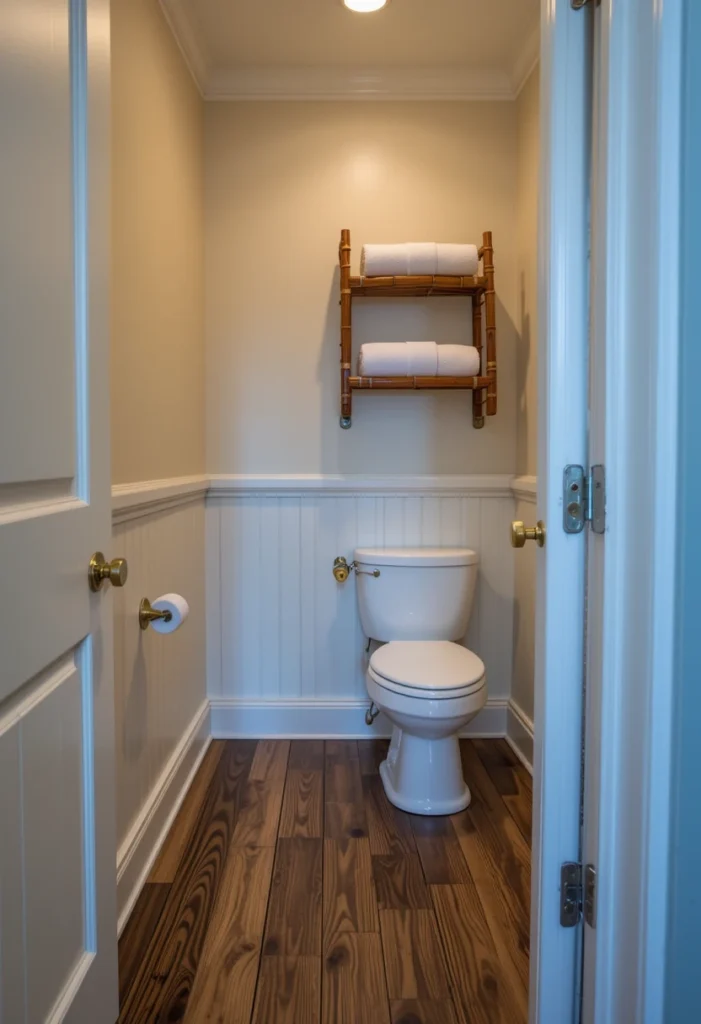
Can you use wood in bathrooms? The short answer is: maybe, but probably not where you think.
Engineered wood may be used in powder rooms or those with very little exposure to moisture. I have witnessed it to be done successfully, it must be well ventilated and the water cleaned up immediately.
The moisture-resistance of bamboo flooring is inherently stronger than the hardwood, yet I do not want to recommend it to full bathrooms. The use of such materials should be limited to bedrooms and living rooms where they excel.
Making the Right Choice for Your Space
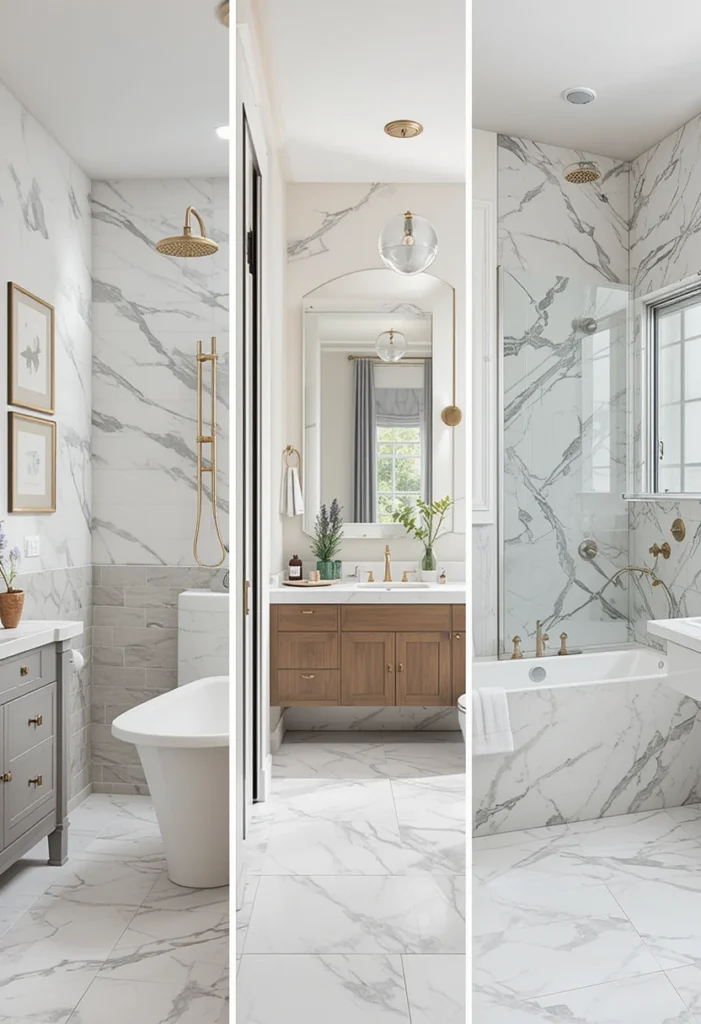
Consider Your Bathroom Type
This is not the case in all bathrooms. A family bathroom is used by more than one shower per day, whereas a seldom-used powder room does not require those needs.
Bathrooms that are used by the whole family should have bulletproof floors. These places I would always suggest porcelain or quality LVP. They deal with the mistreatment and continue to appear presentable.
Master suite bathrooms offer more options. Natural stone can be taken into account provided that you are ready to take proper care of it.
Bathrooms that are used by guests are ideal experimental spaces where new materials can be tested because they are not heavily used.
Budget Reality Check
This is where I become honest with you on costs. High-quality flooring does not cost but an investment. I have seen so many individuals opting to buy the most affordable item and within five years; they upgrade to a better one.
Budget-friendly options that perform well:
- Quality vinyl plank ($3-6 per sq ft)
- Ceramic tile ($2-8 per sq ft)
- Basic porcelain ($4-10 per sq ft)
Premium choices:
- High-end porcelain ($8-15 per sq ft)
- Natural stone ($10-25 per sq ft)
- Designer ceramic ($8-20 per sq ft)
Do not forget to include the cost of installation that may include between 3-8 per square foot depending on the complexity of the material used and where you are located.
Installation Considerations
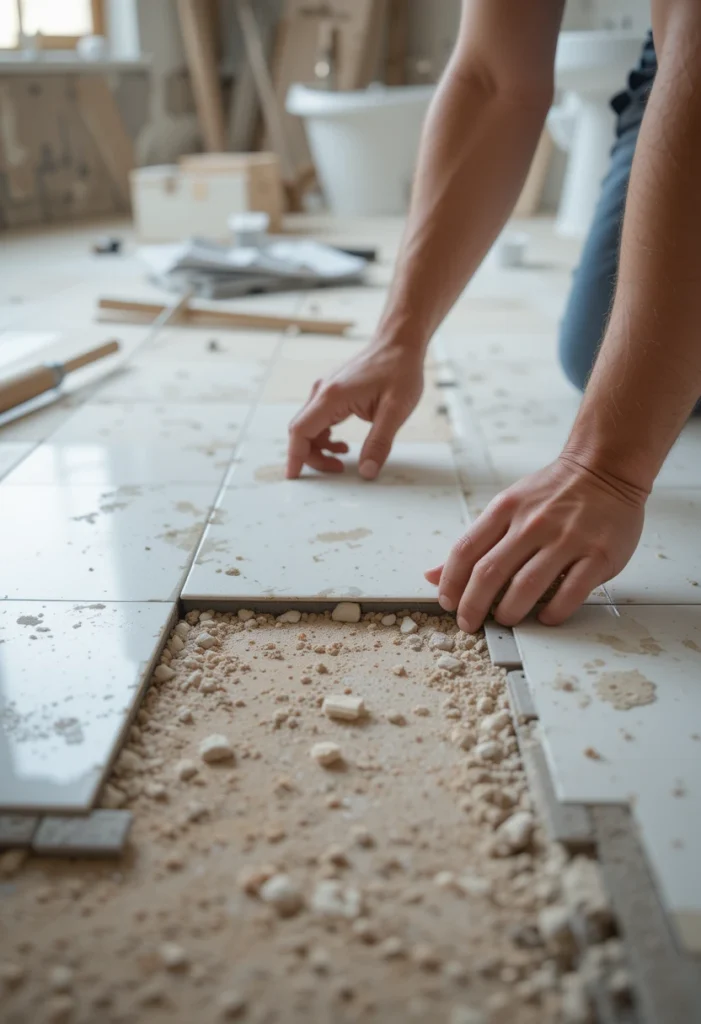
There are those materials that are open to DIY implementation, and there are those that require professional skills. Vinyl plank is typically easy to work with yourself, I installed my first LVP floor using only YouTube instructions and will.
The tile work needs expertise, particularly in case of waterproofing. You need to employ professionals to work with tiles unless you are experienced. Poorly done tile work may cause serious water damage in the future.
Practical Installation Tips
Preparation Is Everything
Even the finest flooring medium will not be of any use when your subfloor is not ready. This is what I was taught after my beautiful tile job had hollows in it due to my hurry in the preparation.
Essential preparation steps:
- Ensure subfloor is level (within 1/8″ over 10 feet)
- Address any moisture issues before installation
- Install proper waterproof underlayment
- Plan your layout to minimize cuts in visible areas
Grout and Sealant Choices Matter
In the case of tile installations, the choice of grout will affect the looks, as well as upkeep. Darker grout is more effective in concealing dirt but may take over the light colored tiles. I usually suggest the use of medium-toned grout as the best proportion.
Epoxy grout is more expensive yet it is more resistant to stains and moisture as compared to the traditional cement grout. It is worth upgrading in the shower areas.
Maintenance Reality
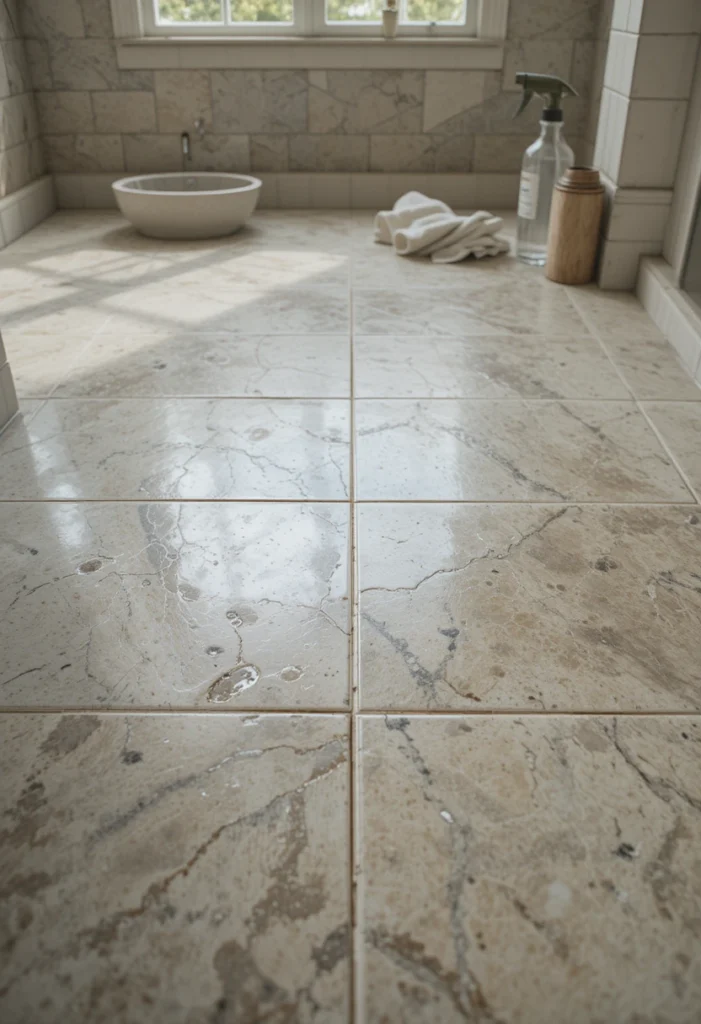
All flooring materials need some form of maintenance, which however differs in a very dramatic manner. Porcelain tiles require maintenance of the grout and a deep cleaning periodically. Luxury vinyl only needs normal sweeping and mopping.
Natural stone will require the most attention – regular sealing, pH-neutral cleaners, and spillages need to be cleared right away. Beautiful? Absolutely. High maintenance? You bet.
I never advise clients to buy a flooring that is not in line with their lifestyle but rather in their taste. It is no point fitting beautiful marble when you are not going to take care of it.
Future-Proofing Your Investment
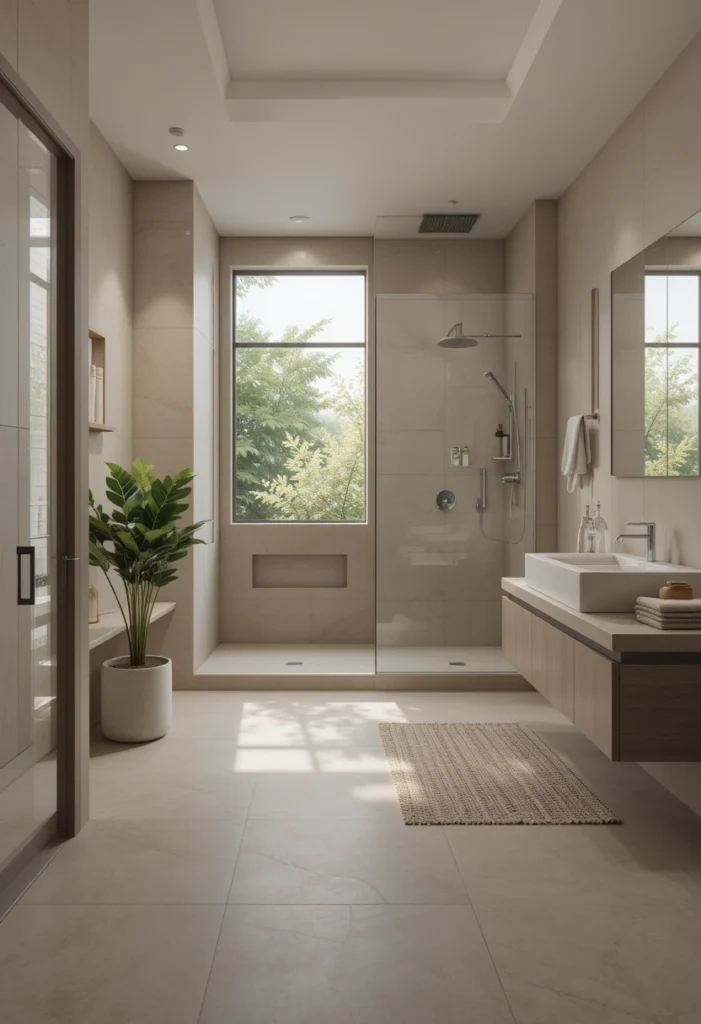
When choosing the flooring in the bathroom, think outside the box. Traditionally used materials such as porcelain or natural stone do not lose their attractiveness and price with time. Fashionable colors or patterns could appear out of date in half a decade.
Take into account the way your needs could also change. Will there be a concern of mobility? The aspect of slip-resistant surfaces increases with age.
My Final Take
Bathrooms are places where my life has been both wonderful and horrible and every time I start to do the masonry of the bathroom, I find myself revisiting this piece of advice; invest in good materials that align to your dedication to maintenance and your life.
My choice would be to recommend high-quality porcelain tile or luxury vinyl plank to most of the people. They provide the most appropriate balance of life and look coupled with affordable maintenance.
Natural stone is perfect when you are ready to take care of it. Avoid the hardwood except when it is the powder that is well ventilated.
Whichever one you decide upon invest in a good installation. Poorly installed great flooring will never satisfy you. In my opinion, it is preferable to have a mid-range material that has great installations compared to premium materials that had bad installations:/
Keep in mind, you will spend many years with this choice, therefore, you should take your time researching, going to showrooms and even order samples to see how the materials will appear in your real bathroom lighting. Your wallet will, as well as your feet, be glad you made the correct decision the first time around.
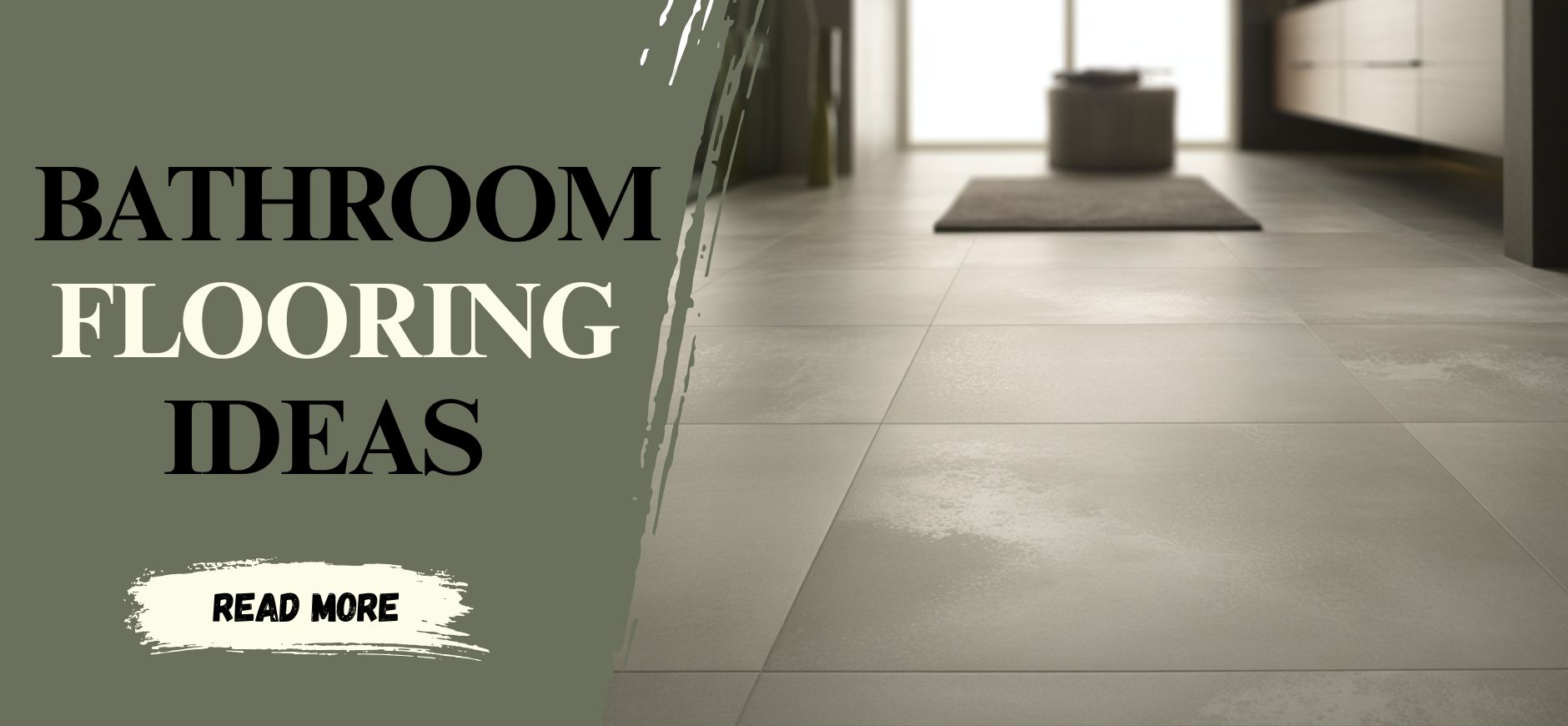
1 thought on “How to Choose the Best Bathroom Flooring Ideas”